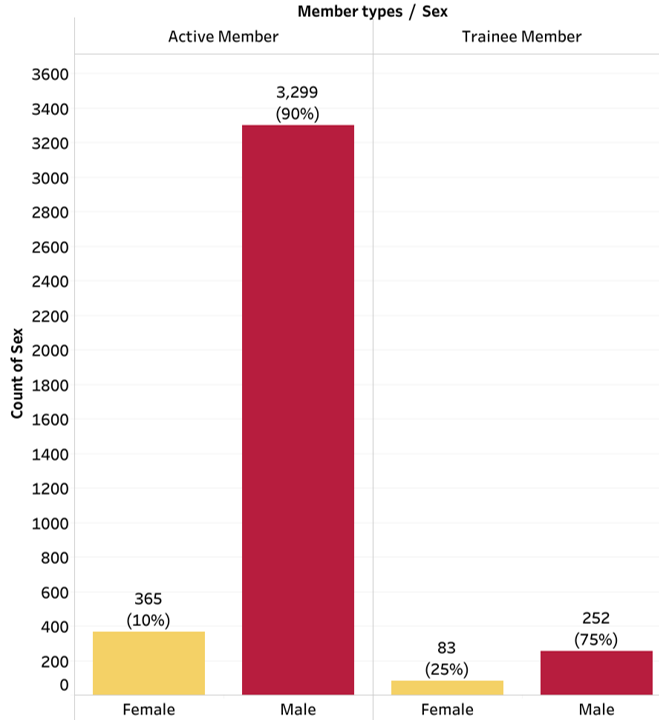STS 2022 DAY 2 — An analysis of active membership data from STS and three other major cardiothoracic surgical societies provides the first comprehensive snapshot of surgeon demographics around the world—without the subjectivity of voluntary surveys—and reveals trends both heartening and troubling.
“We as a cardiothoracic surgery community are global, with a diversity of careers, but concerning factors require immediate attention,” said presenting author Barbara C.S. Hamilton, MD, from the University of California at San Francisco (UCSF). “With an overwhelmingly older and male workforce, we risk losing the ability of our specialty to achieve longevity and sustainability. It is crucial that we wake up to these issues, change the narrative, and create action on both individual and leadership levels.”

During the STS 2022 session “Global Makeup of Cardiothoracic Surgeons as Represented by Our Major Societies and Associations,” Dr. Hamilton presents data from a total of 12,053 membership profiles from STS, the American Association for Thoracic Surgery (AATS), the European Association for Cardio-Thoracic Surgery (EACTS), and the Asian Society of Cardiovascular and Thoracic Surgery (ASCVTS).
“Prior efforts to understand the cardiothoracic surgery workforce have relied on surveys of the memberships of STS and AATS,” Dr. Hamilton said. “These surveys have demonstrated a lack of gender diversity and a broad scope of practice. However, the nature and downfall of survey data is the inherent bias derived from optional participation.”
Dr. Hamilton’s team, therefore, sought to examine all membership profiles of the four largest cardiothoracic surgery organizations to better understand the entirety of the global community—to “provide a snapshot of where our community practices, what we practice, and who we are,” she said.
In partnership with STS, AATS, and EACTS, the team obtained anonymized data that represented 100% of their membership directories. The CTSNet collaborative provided ASCVTS data.
While in many cases the results were not surprising—for example, the current workforce remains at least 90% male—information about surgical disciplines and areas of interest, academic participation, age, years in practice, and geographic location revealed a vivid and varied tapestry of surgeon representation.

Trainee information was excluded from the cross-society analysis because of incomplete profiles. However, additional insights from EACTS on trainee demographics demonstrated that the next generation of cardiothoracic surgeons will emerge more diverse in sex and gender, with 25% of EACTS trainees being female. “We must therefore work to balance our community, by supporting and promoting female cardiothoracic surgeons, and by encouraging female trainees through mentorship and visibility,” Dr. Hamilton said.
She also noted that the cardiothoracic surgery workforce is aging, with the majority of members now in their later career stages, and more often full professors rather than assistant or associate professors. “This highlights the need of our societies to encourage medical students and residents to join the specialty, as well as to support junior faculty in membership participation.”
Coauthor Tom C. Nguyen, MD, chief of cardiothoracic surgery at UCSF, added, “This is the first and largest global snapshot of our cardiothoracic surgery workforce. Understanding who we are is incredibly important as we shape the future of where we are going.”
STS 2022 registrants can view this presentation as an on-demand session. There’s still time to register and join the global discussion at sts.org/annualmeeting.